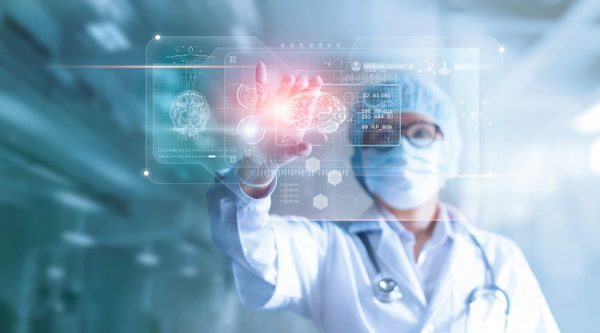One such subject that is gradually gaining traction in the healthcare sector is machine learning.
The top 10 uses of machine learning in healthcare are shown below.
1.Disease and Diagnosis Identification.
Disease recognition through proper diagnosis identification for diseases that are typically thought of as difficult to diagnose is one of the main uses of ML in healthcare. This can range from various hereditary illnesses to tumors that are difficult to detect in the early stages. A good illustration of how combining cognitive computing with genome-based tumor sequencing can aid in making a quick diagnosis is IBM Watson Genomics.
2.Drug Development and Production
Early-stage drug development is one of the main clinical uses of machine learning. Additionally, this includes research and development (R&D) technologies like next-generation sequencing and precision medicine, which can aid in identifying alternative treatment modalities for complex disorders. Currently, unsupervised learning is used in machine learning techniques to find patterns in data without making predictions.
3.Diagnosis from medical imaging
The ground-breaking field of computer vision is made possible by both machine learning and deep learning. The Microsoft Inner Eye initiative, which develops image diagnostic tools for image analysis, has accepted this.
4.Individualized Healthcare
By combining individual health with predictive analytics, personalized treatments can not only be more successful but are also ripe for further study and improved disease assessment.
5.Behavioral modification based on machine learning
Since the widespread use of machine learning in healthcare, a plethora of companies have sprung up in the areas of patient treatment, cancer prevention and detection, and behavioral modification, among other areas. A B2B2C data analytics business called Somatix has developed an app that uses machine learning to identify motions we make regularly so that we can better understand our unconscious behavior and make the required adjustments.
6.Smart Health Records.
Maintaining current health records is a laborious procedure, and while technology has contributed to making data entry easier, the bulk of activities still take a long time to complete. Machine learning’s primary function in the healthcare industry is to streamline procedures to save time, effort, and money. Techniques for document classification based on vector machines and ML-based OCR recognition, like Google’s Cloud Vision API and MATLAB’s machine learning-based handwriting recognition tool, are progressively gaining traction. The next generation of intelligent, smart health records is now being developed at the forefront by MIT. These records will be built from the ground up using ML-based tools to assist with diagnosis, clinical therapy recommendations, etc.
7.Clinical research and trials
There are several potential uses for machine learning in the world of research and clinical trials. Clinical studies can take years to complete, cost a lot of money and effort, and are quite labor-intensive, as anyone in the pharmaceutical sector will attest. Researchers can create a pool of possible clinical trial participants by using ML-based predictive analytics to discover individuals from a wide range of data sources, including prior doctor visits, social media, etc. Machine learning has also been used to determine the appropriate sample size to test, ensure real-time monitoring and data access for trial participants, and harness the power of electronic records to minimize data-based errors.
8.Crowdsourced Data Gathering
Nowadays, crowdsourcing is huge in the medical industry since it gives researchers and practitioners access to tons of data that people contribute with their permission. The future perception of medicine is greatly affected by this real-time health data. Users can use interactive apps that use ML-based facial recognition to attempt and treat Asperger’s and Parkinson’s disease through Apple’s Research Kit platform.
9.Improved Radiotherapy
Radiology is one of the fields in healthcare where machine learning is most in demand. Numerous discrete variables that may appear at any given time are present in medical picture analysis. Complex equations cannot be used to accurately simulate all lesions, cancer foci, etc. It is simpler to diagnose and identify the factors since ML-based algorithms learn from the wide variety of varied samples that are currently available. The classification of objects, such as lesions, into categories like normal or abnormal, lesion or non-lesion, etc. is one of the most often used applications of machine learning in medical image analysis.
10.Forecast for an outbreak
Today, monitoring and forecasting epidemics on a global scale are also being done using AI-based technologies and machine learning. Today, scientists have access to a vast amount of information gathered by satellites, in real-time on social media, on websites, etc. To compile this data and forecast everything from malaria outbreaks to serious chronic infectious diseases, artificial neural networks are used.
Source: analyticsinsight.net









